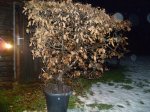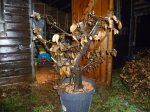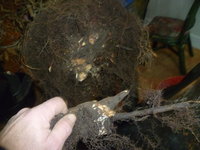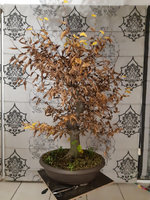Fonz
Chumono
These last 2 weeks I've been working at a construction site (I own a small demolition company) where the parking lot is going to be completely renewed so all the vegetation will be removed. Now there's this hornbeam hedge with a few nice looking trees in it. It would be a shame to see them go to waste, so yesterday I dug one out, put it in a pot and stored it in my van until it was time to go home. When I got home (it was already dark and it was raining) I put it in a better nursery pot with better soil and pruned it back a bit.
I know the timing is awful but do you think it can survive? If it does I'll leave it untouched for a year.
before/after

I know the timing is awful but do you think it can survive? If it does I'll leave it untouched for a year.
before/after











